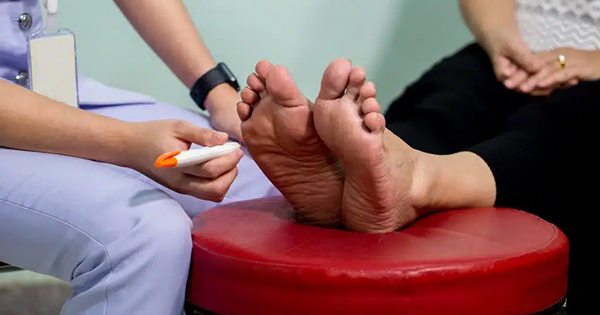Most of us will have read the suggestions that a third or more of patients with diabetes will experience a foot ulcer in their lifetime. As the population of people with diabetes keeps growing, so will the number of people with foot ulceration, and if a million and a half people with diabetes were to develop foot ulceration, this would be catastrophic. Fortunately, I have never felt that these numbers are correct. Even the most complete datasets in Scandinavian countries and Scotland would put the cumulative incidence of diabetes foot ulceration at under 10%. This still has the potential to exceed the capacity of foot clinics to treat them. However, a number of factors alter what might otherwise be a linear relationship and make things a little harder to predict.
Firstly, some of the rise in people diagnosed with diabetes has been due to the change in diagnostic criteria. The shift to using HbA1c for diagnosis has made diagnosing diabetes easier, since a fasting sample or glucose tolerance test is no longer required. While this increases the pick up of patients, diabetes is diagnosed at a much lower level of HbA1c than in previous times and at a level at which complications are much less likely.
Over the past 10 years, there have also been advances in diabetes medications for both type 1 and type 2 diabetes. This should enable better control over time as is seen in the longitudinal data from SCI-Diabetes for example (Scottish Government, 2020). Therefore, there may be fewer patients with diabetes who develop foot ulceration in future.
There is some evidence for this in the Scottish Diabetes Surveys. In 2010, 68% of diabetes patients were recorded as having low-risk feet (NHS Scotland, 2010). In 2021, this has risen to 79.4% (NHS Scotland, 2021). Earlier diagnosis and better management appears to be helping keep the percentage of people who develop risk factors for foot ulceration under control.
In the same timeframe, the percentage of diabetes patients with high-risk feet and foot ulceration has fallen from 11% (6.1% high-risk and 4.7% current active foot disease) to 8.4% (6% high-risk and 2.4% current active foot disease; NHS Scotland, 2021). The fall-off in screening numbers, since the end of Quality and Outcomes Framework targets, has reduced the numbers of patients screened each year, but the percentages are still likely to be representative. These decreasing percentages are in relation to an increasing population. Therefore, the number of high-risk and active foot disease patients has gone up from 20,100 to 27,082. This provides further evidence that as diabetes numbers are now more than two and a half times greater than in 2010, earlier diagnosis and better diabetes treatment are helping reduce high-risk numbers.
The future may not be as optimistic as the apparent slowing in the rise of high-risk patients might appear. Diabetes is being diagnosed at younger ages. Obesity rates are rising. Cardiovascular disease and premature death will still takes it toll. Perhaps even more will die early as a younger diagnosis is still associated with earlier death from diabetes despite better treatments. Recent research presented at the European Congress on Obesity using UK data demonstrates that as weight increases, so do comorbidities, and the cost of care to the NHS increases and life expectancy shortens (Cobham, 2023). Furthermore, in 2019, over 10 years later, obesity-related conditions increased and worryingly, even more so in adolescents who were overweight or obese.
Until society starts to demand change and recognise that body positivity cannot hide from the truth that obesity is the most important risk factor for diabetes (and a whole host of other serious medical problems), then our workloads will continue to climb and people will continue to suffer the consequences.




